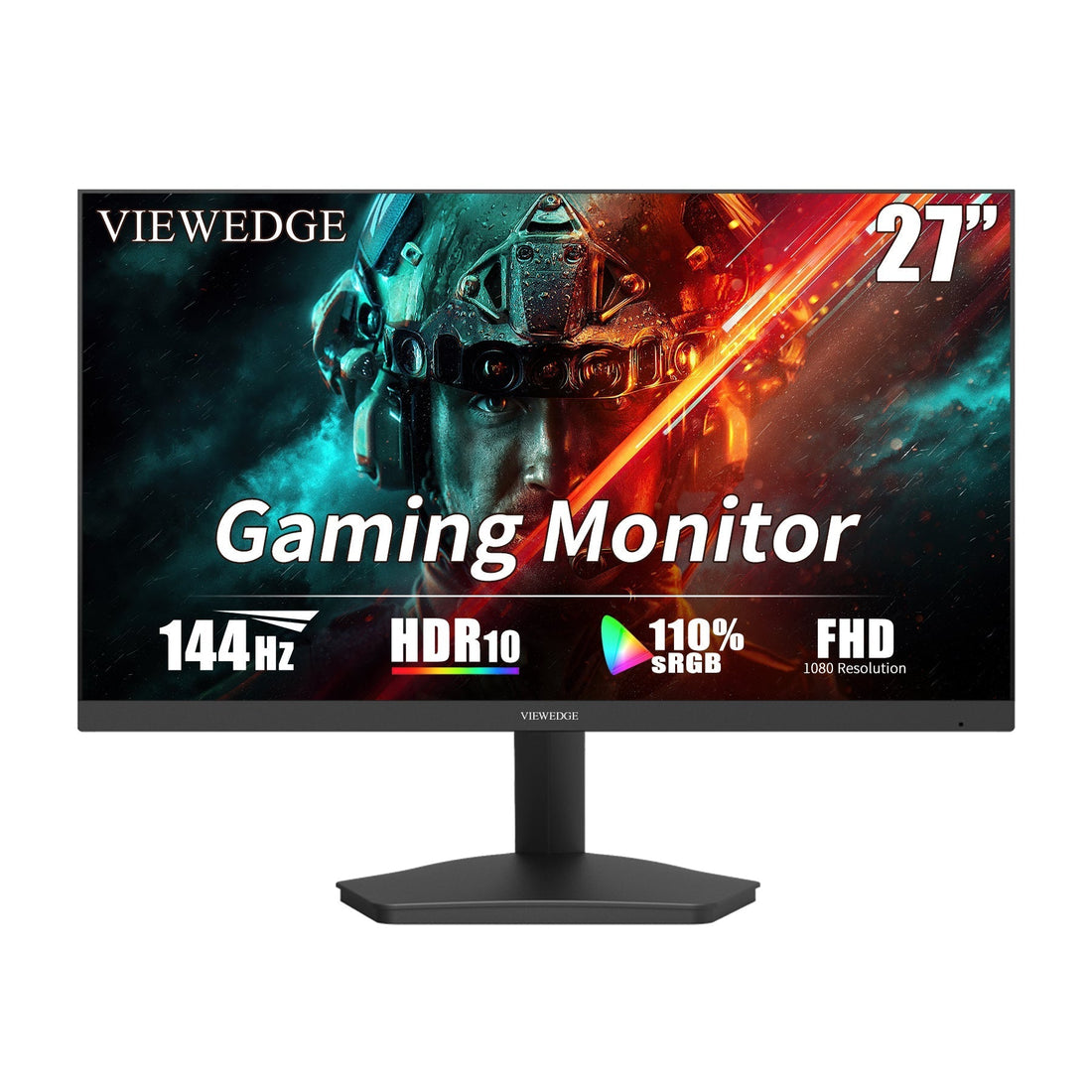
What Does 1ms and 144Hz Mean for Your PC Monitor?
Share
If you're looking to purchase a new PC monitor, you've probably seen the terminology of 1ms and 144Hz utilized within product descriptions. These are especially common when looking at a gaming monitor. So what exactly do these terms signify, and why should you be concerned?
What Is 1ms Response Time?
The "1ms" number refers to the response time of your monitor. Response time is the amount of time it takes for a pixel on the screen to change from one color to another — usually measured from gray to gray or black to white. It is measured in milliseconds (ms). A response time of 1ms means the pixels change color very quickly.
Why does response time matter? Because slower response times can cause motion blur or ghosting, where fast-moving images leave trails behind them. This effect is especially noticeable in fast-paced games, action movies, or sports broadcasts.
A monitor with a 1ms response time reduces these unwanted visual artifacts, providing smoother and clearer motion. This makes gameplay feel more fluid and reduces distractions caused by blurry or smeared images.
What Is 144Hz Refresh Rate?
The "144Hz" refers to the refresh rate of the monitor. Refresh rate is how many times per second the monitor updates the image on the screen. It’s measured in Hertz (Hz). A 144Hz monitor refreshes the image 144 times every second.
Why is this important? The higher the refresh rate, the smoother and more fluid motion appears. Standard monitors usually have 60Hz, meaning the screen updates 60 times per second. But a 144Hz monitor updates more than twice as fast, which makes animations, movements, and gameplay much smoother.
For gamers, a higher refresh rate can provide a competitive edge by allowing quicker reactions to fast-moving scenes. It also reduces screen tearing and input lag, creating a more immersive gaming experience.
How Do 1ms and 144Hz Work Together?
When combined, a 1ms response time and a 144Hz refresh rate make a big difference in display quality, especially for gaming:
Reduced Motion Blur: The 1ms response time helps pixels change color quickly, reducing blurriness during fast motion.
Smoother Visuals: The 144Hz refresh rate updates images rapidly, making movements look fluid and natural.
Improved Reaction Time: Fast response and refresh rates mean the monitor displays your actions almost instantly, which is critical in competitive gaming.
Less Eye Strain: Smoother motion and less blur can make extended gaming or work sessions easier on your eyes.
Is 1ms and 144Hz Only for Gamers?
While these features are most popular among gamers, they can also benefit other users:
Video Editors: Smoother playback and reduced motion artifacts help when editing fast-paced footage.
Graphic Designers: Clearer motion when scrolling or animating content improves workflow.
Everyday Users: Even general users can enjoy smoother cursor movement and less screen flicker, reducing eye fatigue.
What Should You Look for When Buying?
If you are interested in a 1ms 144Hz monitor, here are some things to consider:
Panel Type: TN panels often have the fastest response times but poorer color accuracy. IPS panels provide better colors and wider viewing angles but may have slightly slower response times.
Connectivity: Check if the monitor supports HDMI 2.0 or DisplayPort to handle 144Hz properly.
Screen Size and Resolution: Balance your needs — 24 to 27 inches is common for 1080p 144Hz monitors.
Extra Features: Technologies like FreeSync or G-Sync help reduce screen tearing and stuttering.
Conclusion
Understanding what 1ms and 144Hz mean helps you make a better decision when buying a PC monitor. A 1ms response time reduces motion blur, while a 144Hz refresh rate provides smoother visuals. Together, they create a clearer, faster, and more enjoyable viewing experience, especially for gamers. But even non-gamers can appreciate the benefits in daily use.
If you want smooth gameplay, fast reactions, and crisp motion, a monitor with 1ms and 144Hz is a smart choice. Make sure to pick the right size, panel type, and connectivity for your needs to get the best experience.
More Thought:
Who Should Buy a 1080p 144Hz Monitor?
Is a 1080p 144Hz 24-Inch Monitor the Sweet Spot for Everyday Gaming?
1080p 144Hz vs 4K 144Hz on a 24‑Inch Monitor: Which Delivers Better Value?
